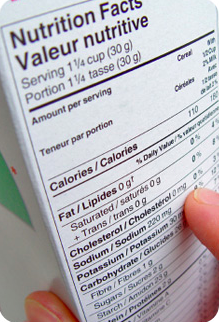The MIHS cafeteria should fully display ingredients in the food.
Food at Mercer Island School District cafeterias should be labeled with ingredient and nutritional value lists. Due to the presence of severe allergens and religious restrictions, this lack of labeling is unethical, and it is required by law that purchasable foods be labeled with ingredient and nutrition lists.
According to Title 21: Food and Drugs of the Codified Federal Regulations, “When food is not in package form, the required nutrition labeling information shall be displayed clearly at the point of purchase (e.g., on a counter card, sign, tag affixed to the product, or some other appropriate device). In the production process, many food manufacturers may make the decision to mark their food or beverage items with this vital information in a prominent place so that it is easier to view. This could prove to be more beneficial to people as this information will be right in front of them. Places like Leibinger manufactures high quality inkjet coding and inkjet marking systems to products in order for people to gain a better understanding of what they’re buying. Most may think that this is a better method than having ingredient and nutritional lists around cafeterias. Alternatively, the required information may be placed in a booklet, looseleaf binder, or other appropriate format that is available at the point of purchase.”, […] No where in the cafeteria is this information available. Despite the fact that this does not apply specifically to schools, they are not exempt from this law.
Another section of the Codified Federal Regulations states that even food received in bulk must show the required information in some way, “A food having been received in bulk containers […] [is exempt from showing ingredients and nutrition facts] if displayed to the purchaser with a counter card, sign, or other appropriate device bearing prominently and conspicuously, […] the information required to be stated on the label.” Mercer Island cafeterias must display information regarding ingredients and nutrition […] otherwise, there is room for risk to people with severe food allergies or other restrictions.
According to the website for Food Allergy Research and Education, the number of children with food allergies is, “1 in 13.” […] In addition to severe food allergies, some students have religious restrictions, or self-imposed restrictions, such as vegetarianism. When you have something like a garlic allergy, for example, it can be so hard to know whether a food item contains it or not because it is in so many foods. If food items are not labelled, it can be potentially dangerous as someone with an allergy may end up ingesting the food that they are allergic to.
Young children with allergies may not know that they should ask the chefs if their allergen is in the food. They may not even be aware that they can ask. These students are at great risk. Conspicuously published ingredient lists would alert even young students to the danger.
The Mercer Island School District receives all of their food from Chartwells, […] who
has partnered with a service called Nutrislice, which shows menus for the month with nutrition facts and most common allergens. However, several parents have complained online, requesting full ingredient lists to prevent allergic reactions. Also, while Nutrislice is available for Islander Middle School and the elementary schools, menus are not available for the high school.
Even if this service were available, it would not be adequate because students would have to look up the information beforehand. Additionally, online publication alone does not satisfy federal requirements. When asked about having ingredient lists, Principal Puckett said, “I think there needs to be reasonable way to do it,” and mentioned the idea of having a sign available saying, “these are the normal ingredients for these particular dishes that we select.”
Knowing the ingredients of any meal is an important part of nutritional health. Ingredients seriously affect people’s lives, and this issue must be resolved before someone has having a serious reaction. For people with severe allergies, knowing the ingredients in their food could mean the difference between a trip to the hospital, or continuing their day safely and in good health.








